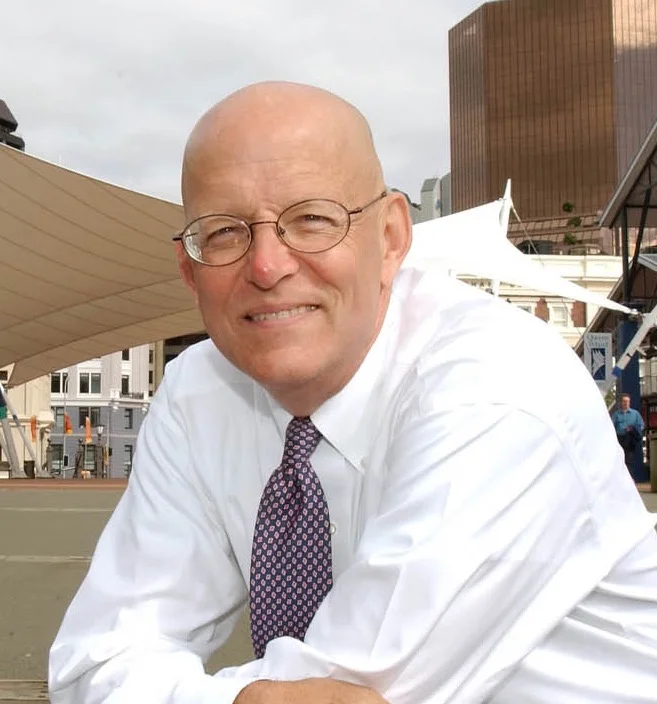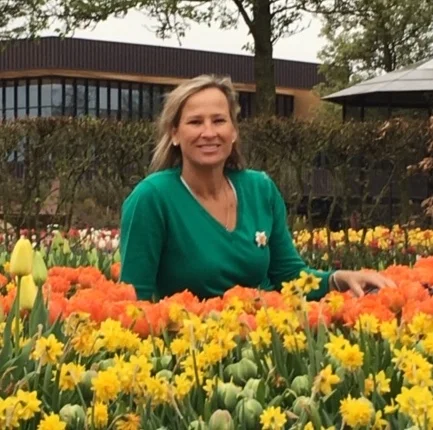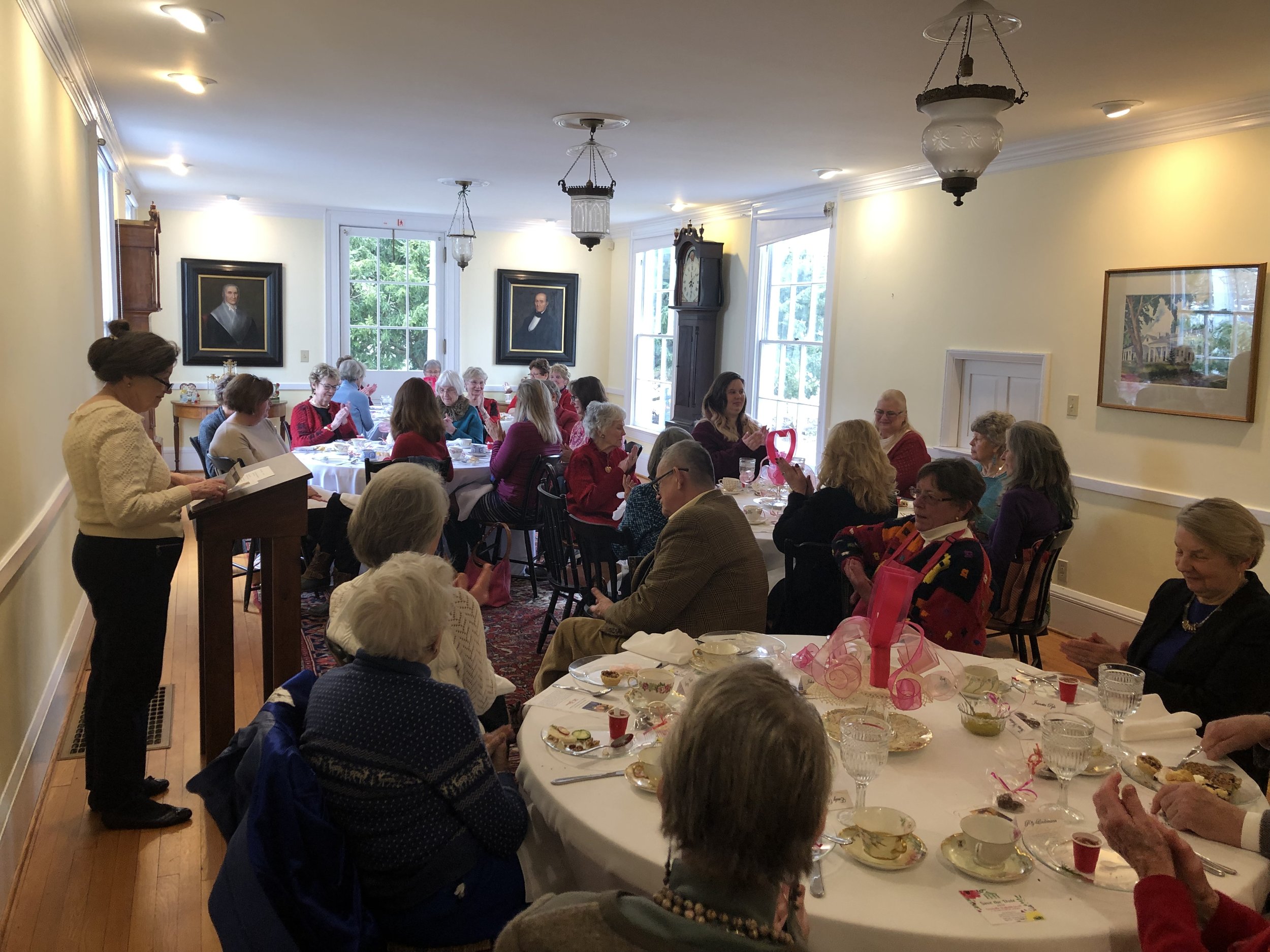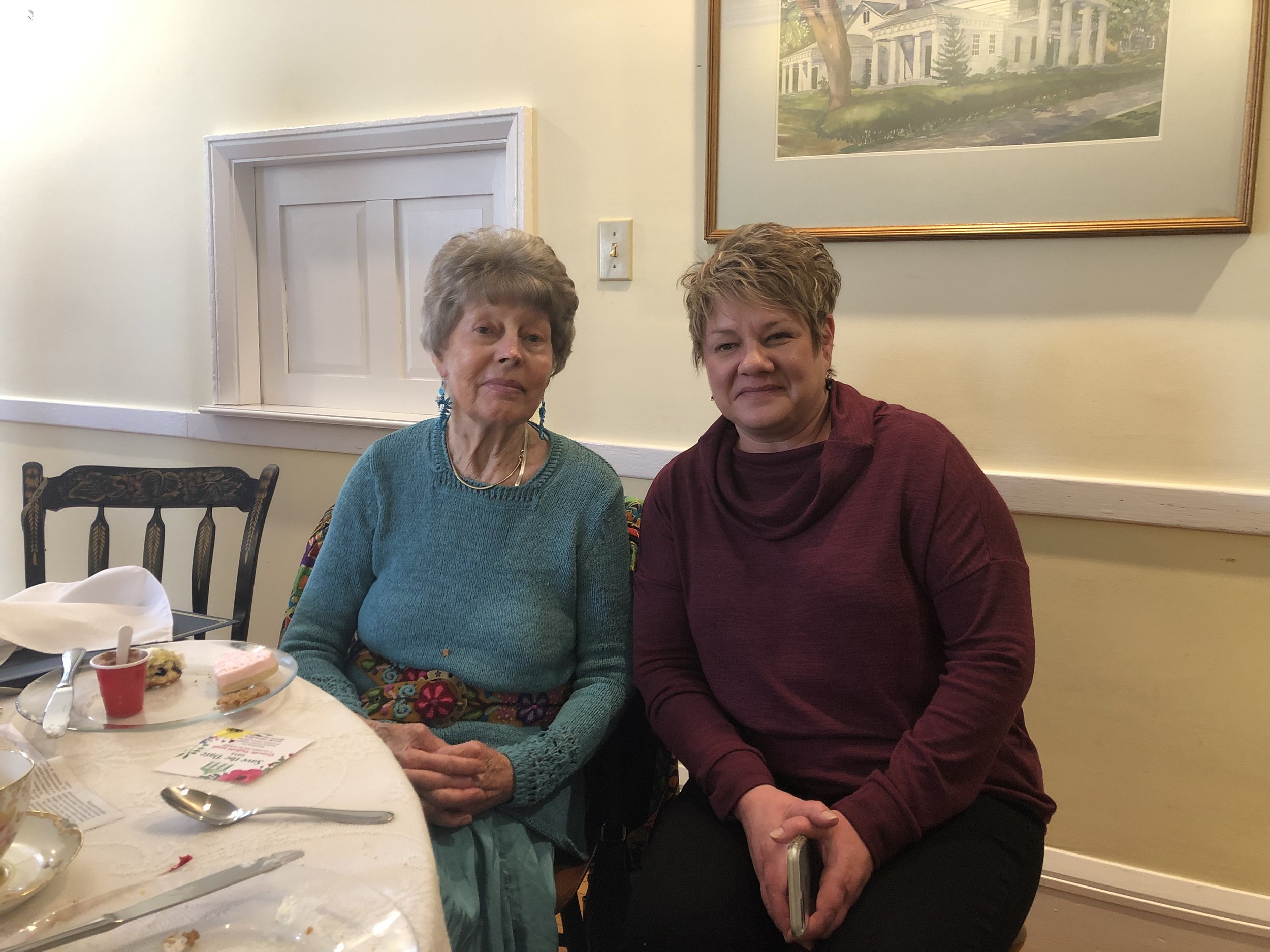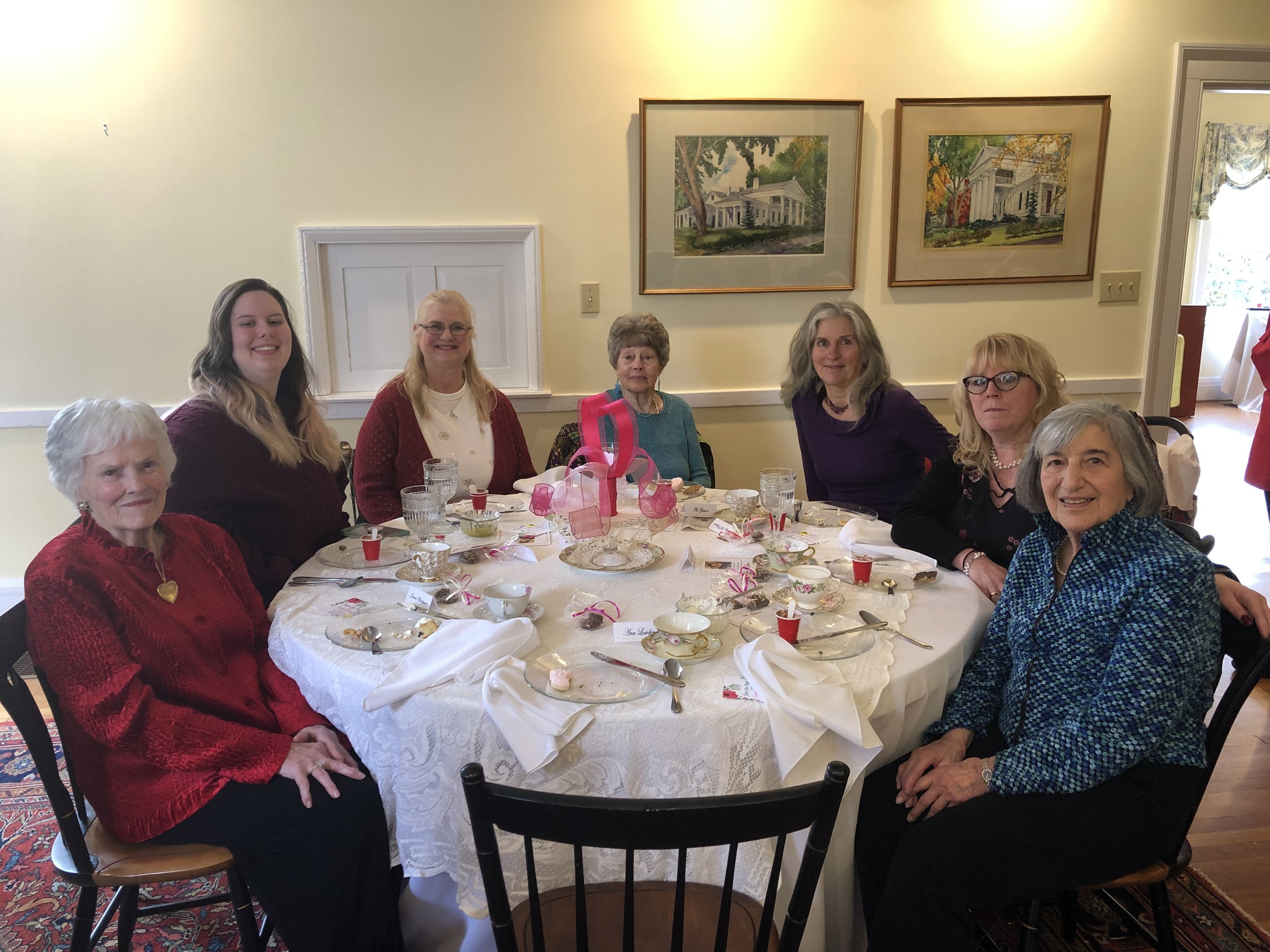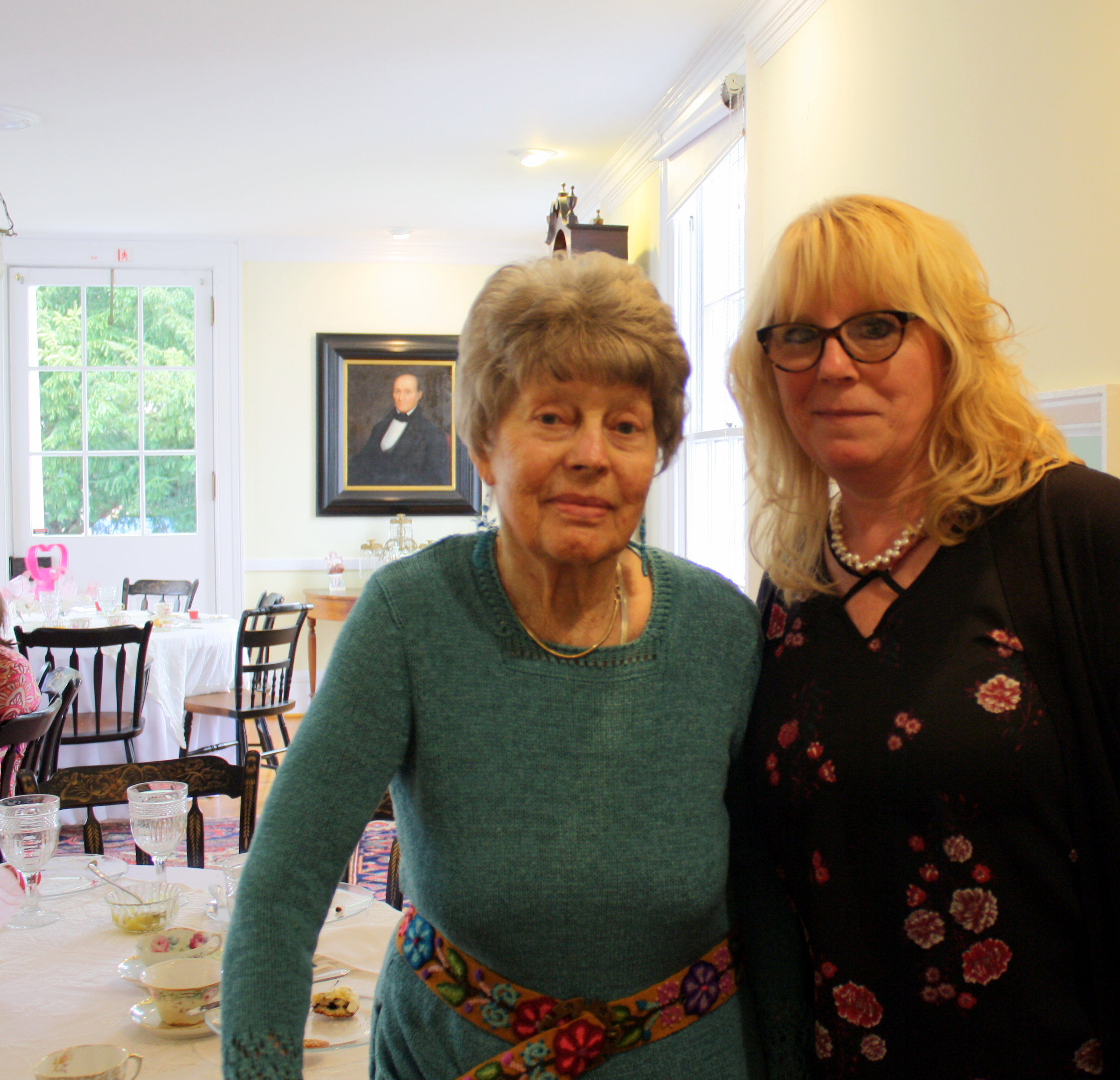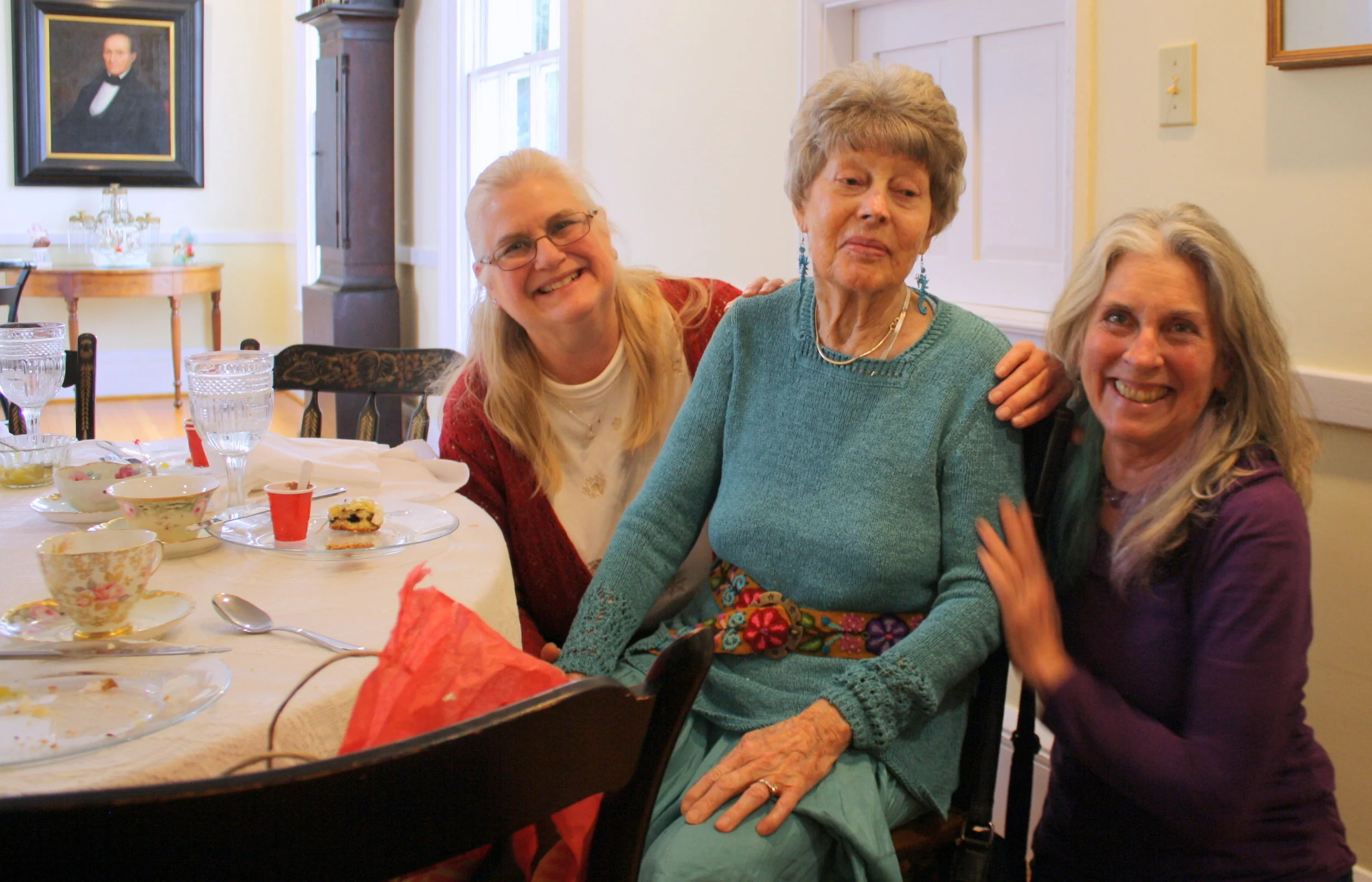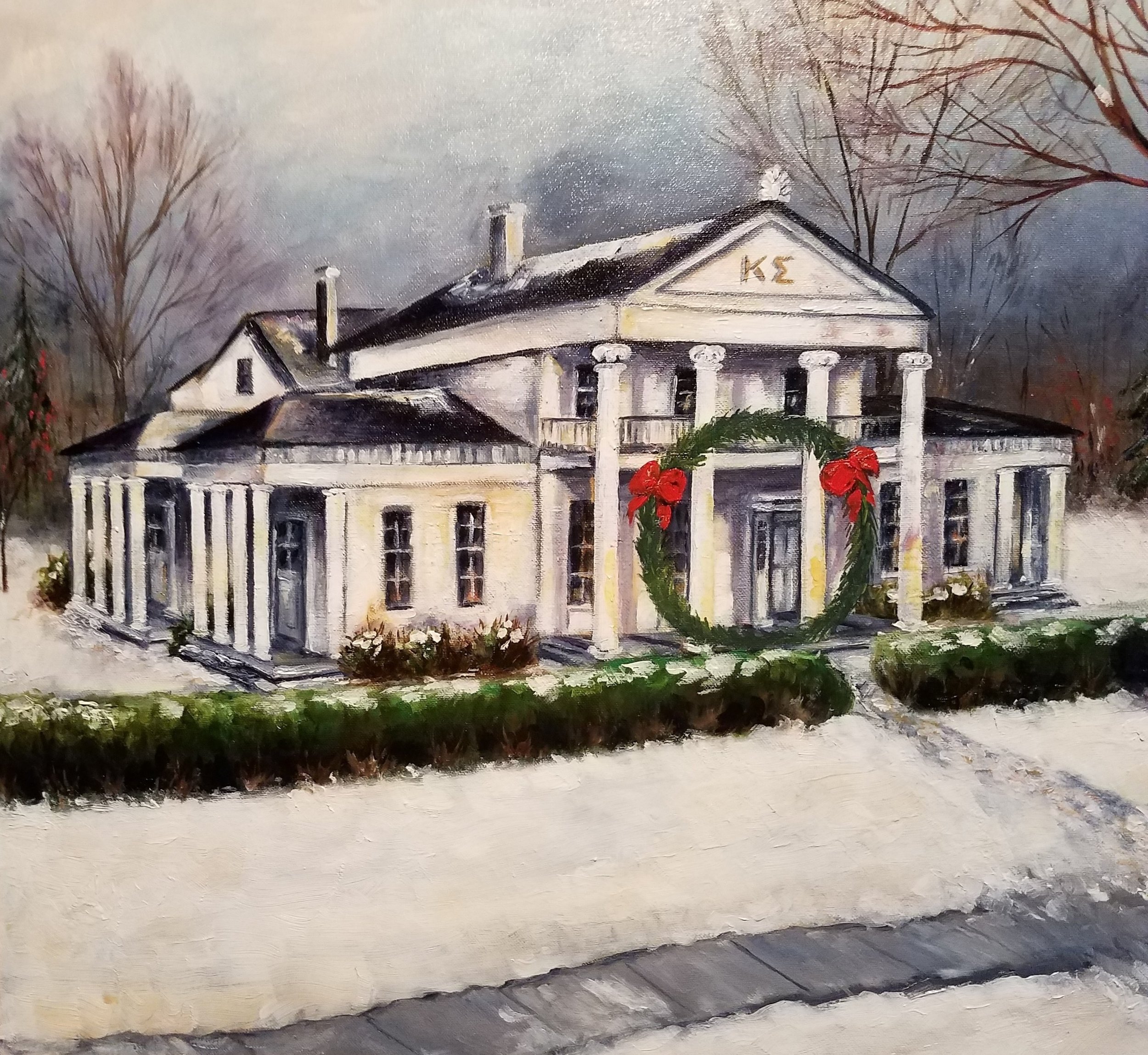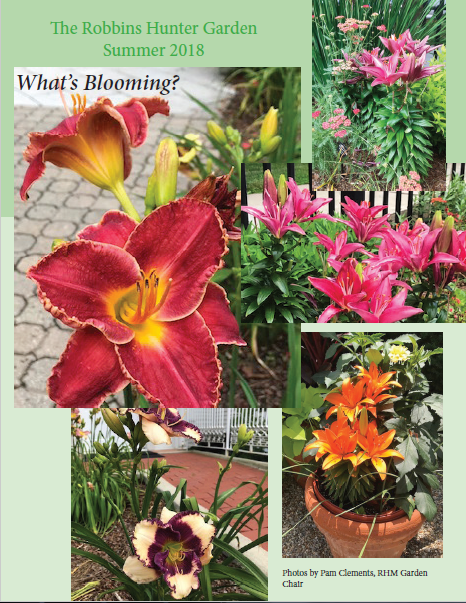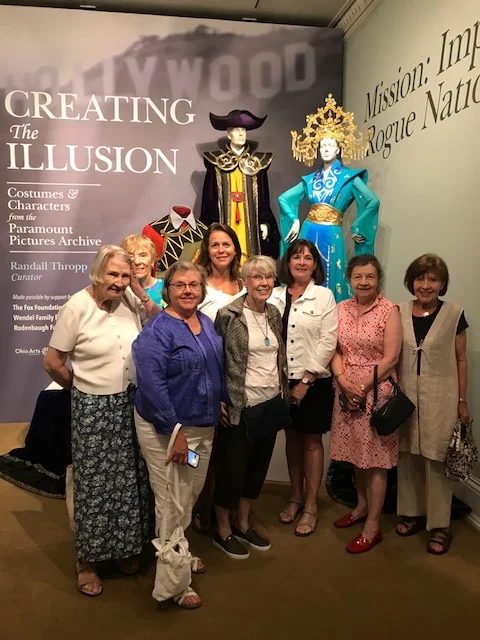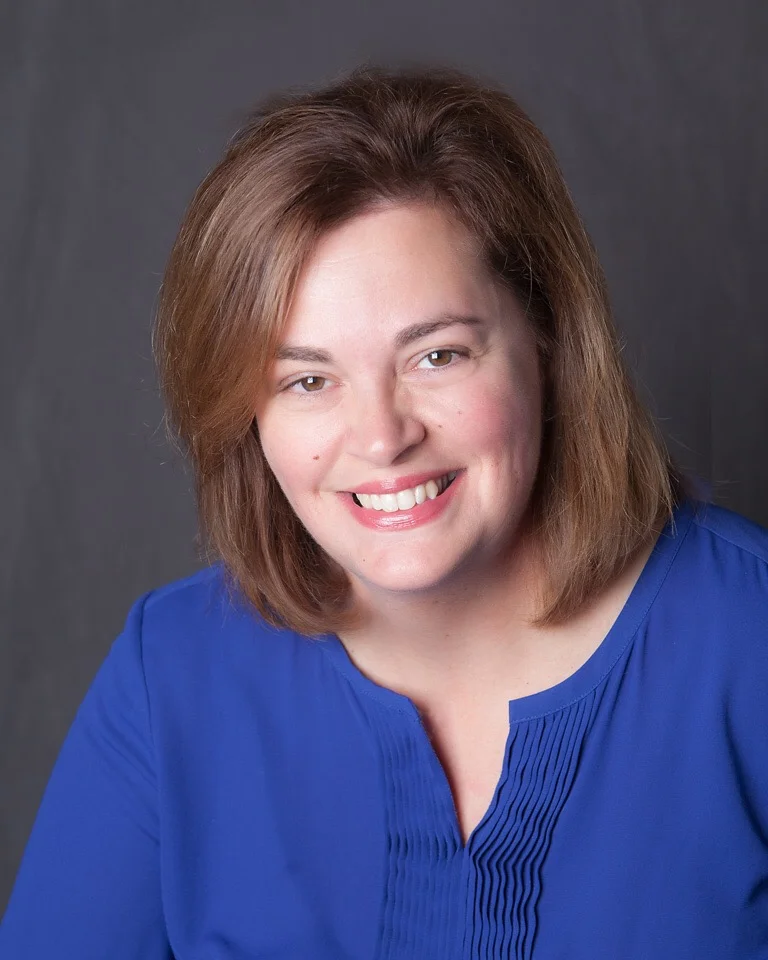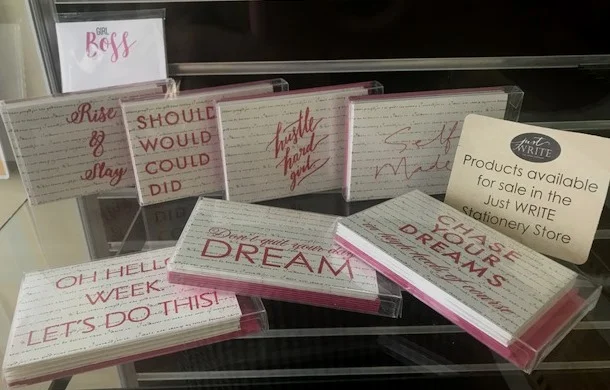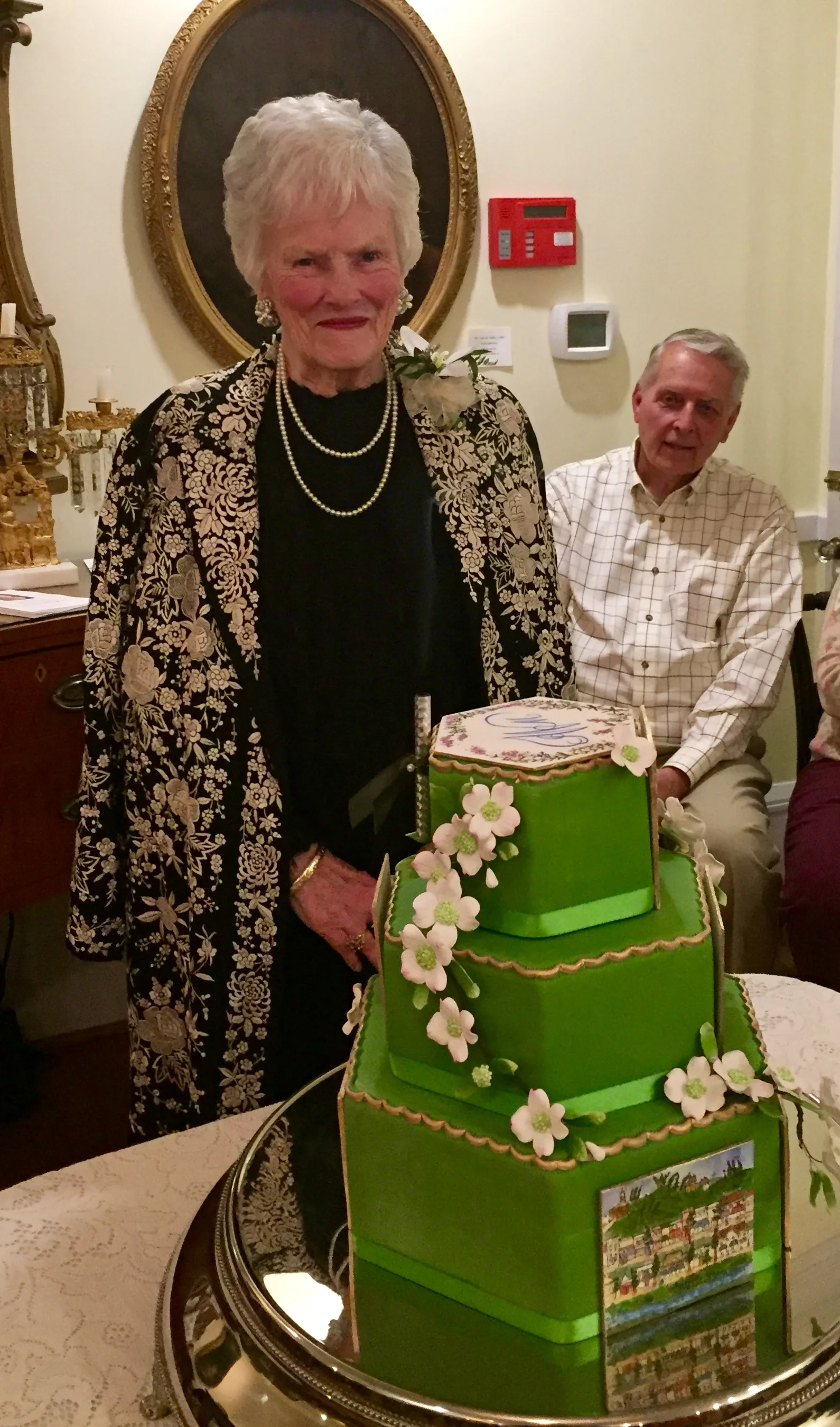Viewing entries by
Evelyn Frolking, Editor and Board of Trustees
The Robbins Hunter Museum is pleased to announce four new members to the Board of Trustees. The Board of Trustees manages the business of the Avery-Downer House. Members volunteer their time and passion to ensure the mission of the Robbins Hunter Museum is carried through.
Over the past year or so, the board lost several valuable members due to time commitments, moving away, or retirement. “Knowing the Museum was going into a period of self-analysis, it was time to create a long-range planning committee to chart a course for the future, and the growth and development of the museum,” said Christina Gray, president.
“Looking at the existing board, we realized there were several areas that needed representation. We needed more businessmen and women to keep our eye to the goals; we needed an attorney for insight and legal advice, and we needed younger members ready to make an impact on the museum and the community.”
We asked them to tell us a little about themselves and their perspectives as new members:
John Martin
For 15 years John held executive positions at a software and services company. His executive responsibilities ranged from marketing to consulting services to international operations where he managed business development and marketing initiatives. He is a current member and former officer of East Central Ohio SCORE, a nonprofit association under SBA dedicated to helping small businesses get off the ground, grow and achieve their goals through education and mentorship.
“Robbins Hunter Museum is a unique part of the community and has the potential to appeal to a national audience,” John says. “As board members we have an individual and collective responsibility to expand the appeal of this asset to the wider area. And on a local level, to raise the awareness within the community of this not so well-known treasure.”
John believes the biggest challenge in the next few years is establishing financial stability and then to increase the endowment to ensure future stability and allow the museum to gain presence to a wider audience.
“The first step in addressing an issue is to define the problem and then the solutions,” he says. “The current board is well into this process.”
Catherine Burgett
Catherine is a member in Frost Brown Todd’s Columbus office where her practice focuses on the representation of both public and private employers in a broad range of labor and employment matters, including traditional labor work, employment litigation, breach of contract, and advising employers on a daily basis regarding employment issues. She represents a wide variety of small, mid-size, and large employers, including those in the health care, manufacturing, logistics, technology, food service, construction, retail, and customer service industries, as well as several public sector entities in Ohio and surrounding states.
Catherine is a graduate of Denison University, the William and Mary School of Law, and the Mason School of Business. In addition to other accomplishments, she was named to Columbus Business First 40 under 40 in 2015, is a 2015 graduate of the Leadership Columbus program, and an Ohio State Bar Foundation Fellow.
“As a graduate of Denison and someone who believes that the treasures of the past must be preserved to inform and enhance the future, Robbins Hunter Museum is a perfect fit,” says Catherine. “I am excited to lend any assistance I can to the Board and the museum as a whole. I believe the biggest challenge for RHM is defining its mission to both serve its historical legacy and to be well positioned for future growth.”
Sandra Lodge
Growing up in Lancaster, Ohio, Sandra became exposed to local history and unique historical homes at an early age. She recognizes that the Robbins Hunter Museum falls into both of those categories. “Serving as a volunteer board member provides an opportunity to work with other community members in preserving and promoting one of the jewels of downtown Granville,” Sandra says.
After graduating from OSU with a Bachelor of Science in Business Administration, Sandra worked at a Big 4 public accounting firm in Columbus. While working there she earned her CPA license and achieved her Masters of Business Administration from Capital University. Following five years of public accounting, Sandra worked in The Limited’s corporate division of Store Design & Construction for seven years. She then started at Licking County Library in 2007. Sandra was thrilled to find a job that combined her knowledge of accounting / finance and her love of books, especially mysteries (book mysteries, not accounting mysteries!).
“I have enjoyed volunteering with multiple community organizations in Granville and would like to share those experiences with RHM,” she adds. “As a CPA, I can also offer financial skills to assist the board.”
One of the biggest challenges over the next few years, she said, will be to balance all of the unique features of the museum from its Victoria Woodhull Clock Tower and the history of Mrs. Woodhull to its nationally ranked daffodils garden to the architectural significance of the Avery-Downer house with the available financial resources. “The board is positioning itself to address all of these unique features by updating its strategic plan, preparing to have a facility assessment completed to properly plan for future maintenance and enhancing its marketing and event planning.”
Rachel Menzer
Rachel hails from Johnstown, PA and Sebewaing, MI. She was first introduced to Licking County by her husband, Drew, who grew up here. They have two children, James, 3, and Kate, 2. Rachel graduated from St. John's College in Annapolis, MD, in 2013 with a BA of liberal arts. During college, she completed an internship at the Saginaw Art Museum in Saginaw, MI, another museum housed in a beautiful historic home and garden.
“One of my favorite aspects of the village of Granville is its historic charm. I chose to volunteer as a board member so that I may become more involved in our community while volunteering my time to a museum that treasures our history,” Rachel said.
She is interested in helping the museum continue to engage a larger audience, especially families and students, so that the next generation appreciates its history and becomes leaders for tomorrow.
“I think our biggest challenge is going to be balancing our goals to grow the museum with continuing the important work that is already being done,”she said. “I believe the board is full of people with diverse talents and connections and that we will be well-positioned to achieve this balance.”
“There’s something about peacefulness and connection one feels in a garden,” says Holly Shai, this year’s chairperson for the biennial garden tour, sponsored by Robbins Hunter Museum. “The garden brings serenity to me and I want others to feel the emotions I get when I’m in the garden.”
Holly Griesse Shai chairs the Granville Daffodil Stroll this year and as you can see, she loves flowers, especially Daffodils!
Shai, as chairperson of this year’s tour, is pleased to announce the “Granville Daffodil Stroll, A Celebration of Spring,” a tour of selected gardens in Granville, is set for Saturday, April 27, from 9 a.m. - 4 p.m., with a Patron Party on Friday, April 26, the evening before. This year’s tour is scheduled two weeks after the popular Granville Daffodil Show, setting the stage for more Daffodil viewing as they grow and bloom in the natural settings of village gardens.
Past garden tours have taken place in the summer. This year, Shai says, the event will be a celebration of spring. “Everything is so hopeful in the spring,” she says. “It’s a good time for enjoying our local gardens, especially with the popularity of the Daffodil flower here in Granville. It will be fun to see them blooming in gardens.”
Five gardens are on tap for touring, from those professionally designed to those that are homeowner labors of love. Shai’s own garden will be included, where visitors are invited to stroll her hybrid garden of rhododendrons and azaleas. “We’re now 24 years into our garden,” Shai says of the gardens on the 26-acre property, “and each year my husband, Park, and I add something new.”
A statue stands in the Shai garden, as seen at the 2017 Granville Garden Tour.
The weekend kicks off with the Patron Party on Friday, April 26, at 6 p.m. at the Museum, a pre-tour event open to the public. Tickets are $75 and include one ticket to the garden tour the next day, food, beverages and lots of socializing. As tour day dawns, volunteers gear up to sell tickets and be on hand at tour gardens to welcome visitors.
The tour, in its 3rd year and the largest fund raiser for RHM, attracts more than 450 people. Tickets at $25 each can be purchased on line HERE or at the door of the museum anytime during tour day. The event is rain or shine. All proceeds support on the ongoing development and maintenance of the Jill Griesse Historic Garden on the grounds of the Avery-Downer House, the home of the museum, which just this last year earned the notable distinction of being placed on the National Registration for the American Daffodil Society. Shai is the daughter of Paul and the late Jill Griesse. Jill is noted for her vast Daffodil gardens, and for leadership on the national level as the chairperson for the Chicago and Columbus Conventions of the ADS. The Griesse Historic Garden at RHM, which features many of the special Daffodils moved from her mother’s garden, is a gem for Granville, Shai says. “And it’s open 365 days a year.”
Shai is quick to say she owes much of her love and commitment to gardening to her mother. “It was a chore to weed, water and help my mother maintain the garden when I was a kid, “ she remembers, “but as an adult when I planted my first bulbs and they grew and bloomed, I was so proud of myself for having done it on my own.”
That first small success turned into a lifetime of gardening and it is that love of planting, growing and blooming she hopes visitors to the Granville Daffodil Stroll will feel when they enter those backyard spaces of beauty and tranquility.
Help Holly make this celebration of the gardens a resounding success! Support the RHM Garden Tour with your sponsorship at one of four levels:
Daffodil $2,500
Your name and logo on the RHM donor wall and sponsor’s board, with six complimentary tickets to the party and tour.
Bouquet $1,000
Your name and logo on the RHM donor wall and sponsor’s board, with four complimentary passes to the party and tour.
Blossom $500
Your name and logo on the RHM donor wall and sponsor’s board, with two complimentary passes for the party and tour.
Bulb $250
Your name and logo on the RHM donor wall and sponsor’s board, with 2 tickets for the tour.
All gifts are IRS tax deductible and the Robbins Hunter Museum is a 501 (c)3 nonprofit organization. Make your donation with payment to RHM, PO Box 183, Granville, 43023 or click HERE to complete your donation online. All proceeds support the Jill Griesse Historic Garden.
Flo Gibson
2018 Victoria Woodhull Woman of Achievement
Visitors astute to architecture and history sometimes ask questions that we can’t always answer as they tour our beautiful house museum. One such question reminded us that while we know a lot, we don’t always know it all. And in the process of tracking down answers, we learn something more about the wonder that is the Greek Revival Avery-Downer House, home to the Robbins Hunter Museum.
Doug Johnson, the archdiocese of Baltimore, toured the museum on his first visit to Granville not long ago. He noticed the design of the front door differed from the drawing of the door in the book The Modern Builder’s Guide by Minard Lafever, originally published in 1833.
Why so, he asks? To answer his question, we turned to our expert, Architect Dr. William Heyer. Here’s what he said. “Because Minard Lafever was really only a consultant on the house for Mr. Avery and because Benjamin Morgan was in fact the designer/builder, it does not come to me as odd that some alternative design elements were used. This was common in the Grecian period. In fact, many of the design elements in the house were inspired by Lafever’s guidebooks and also Asher Benjamin’s guidebooks of the same date (1832-33). But they were really only a starting point and it is refreshing to see that Lafever trusted the local builders with whatever napkin sketches he provided for Mr. Avery in New York.”
Ann Lowder, director, adds “We had records noting the door itself was originally grain painted, a trompe-l’oeil, to resemble fine mahogany.” Delicate tracery of lotus vines above the door, restored to its original gold leaf, should be observed, she notes.
Above the front door of the Robbins Hunter Museum.
“The museum is grateful to Tom King, a Denison alumnus, who knew Robbins Hunter and donated his time and talent to restoring the finish to the door,” she adds.
Heyer also offers a broader perspective. “Much of the beauty of Ohio Grecian architecture resides in the inspired uses of Greek elements such as those of Mr. Morgan. That is why I—having moved here from New York—find the Grecian architecture of the “new” states after the revolution to be the most clever and original of the entire Grecian period. Look at Hamlin’s Greek Revival Architecture in America for other fun examples.”
An outstanding feature of the design of the house, perhaps another of those fun examples, is that it incorporates all three Greek column designs: Doric (found on the side porches), Ionic (found on the front porch), and the magnificent Corinthian columns that flank the front door.
Next time you step up to the front door, pause a minute and take a good look!
Noted activist for civil rights, gender equality and social justice, Mary Frances Berry, kicks off the first 2019 Victoria Woodhull: Phoenix Rising Roundtables on Monday, Jan. 28.
Three roundtables next year focus on women advocates, with focus on humanitarian advocacy in April and child advocacy in September.
January’s program is offered in collaboration with Denison University. The location of the roundtable on the college campus will be forthcoming.
The three-year series began in 2018 with roundtables focusing on the Voices of Women. Attendance was high at all three, paving the way for successful 2019 events. The Robbins Hunter Museum sponsors these events in partnership with Denison University.
Berry’s work as an activist is commendable. Serving as Chairperson of the U.S. Civil Rights Commission, Berry demanded equal rights and liberties for all Americans during four Presidential administrations. A pathbreaker, she also became the first woman to head a major research university, serving at the University of Colorado at Boulder. Berry also served as the principal education official in the U.S. Department of Health, Education and Welfare, working to improve access and quality education in our schools.
In 2013, she was one of the recipients of the Nelson Mandela award from the South African Government for her work in organizing the Free South Africa Movement (FSAM) which helped to end apartheid. Berry was selected to speak by the South African Government representing FSAM at the national celebration of the life legacy and values of Mandela at the Washington National Cathedral in December, 2013.
As Berry continues her research, writing and activism, she insists that each generation has the responsibility to make a dent in the wall of injustice.
Berry exemplifies the leadership of early activist Victoria Woodhull, whose life passions were driven by the unshakeable desire to bring about equality for all. Her remarkable life and resulting consequences became the basis for the three-year series of roundtables designed to further discussions about causes and reforms that she thought important and that continue to be relevant today.
Each year since its inception in 2011, Robbins Hunter Museum has recognized a local woman for achievement in her field of endeavor. For 2018, Florence R. Gibson, “Flo”, has been named the recipient of The Victoria Woodhull Woman of Achievement award.
Flo will be honored at a luncheon and ceremony on February 14, 2019, at the museum. A brick with her name, her area of achievement, and the year of presentation will be installed in the clock tower walkway at the museum.
Locally, Flo is widely known for her gardening expertise, but it is her care for women at risk that places her in a position of esteem. In the many years she tended at least 16 gardens scattered on her Alexandria, Ohio, farm, her gardening efforts often turned into the regular and anticipated Flo’s Garden Party, a fund raiser to support Action Ohio Coalition for Battered Women and the local Center for New Beginnings, a battered women’s shelter in Newark, which she founded.
It is the founding and operation of Center for New Beginnings that, in particular, earns our respect and admiration for her accomplishments. As reported in the Newark Advocate in 2015, Flo realized that Licking County needed to do more to help women in need of protection.
“So she teamed up with a group of women and a few attorneys to start a shelter for women affected by domestic violence. They didn’t have any money, and at one point considered renting out a storefront downtown and setting up some cots. Eventually, the team was able to get a grant to open a formal shelter and it took off from there,” the article reported.
“Flo’s work with the Center for New Beginnings and Action Ohio certainly has made a huge impact on the lives of so many women and their families in Licking County and beyond,” says Ann Lowder, director of the Robbins Hunter Museum.
To visitors during the holiday season, it may seem like there is a decorated Christmas tree in every corner of the house museum. Meticulously decorated trees everywhere! But to the curators, each tree is representative and essential to Robbins Hunter Museum theory, practice and mission. In other words, there is method behind the “Christmas tree madness” at RHM.
The mission of the holidays here is to interpret the life and times of the occupants of the house, says Dr. Rebecca Dungan, former program director and board member who continues to love doing Christmas at the museum.
Two mission-driven trees in particular, the 1950s tree in the Octagon Room and the 1870s tree in the Parlor stay essentially the same each year, Dungan says. “They are purposefully designed to further our tour goal for visitors to ‘step into the past to experience the way a family lived.”
The Octagon Room tree interprets the life and times of Robbins Hunter after the war and is also a tree for learning the effects of World War II on the American Christmas tree. The Parlor Room tree is an interpretation of the way families celebrated Christmas in the 1870s and offers an opportunity to gain insights into the custom of the times, she added.
“Putting up these trees each year is the equivalent of our practice of putting netting over the mirrors, slipcovers on the furniture, and a croquet set in the ladies parlor in the summer months,” she said.
Then there are trees that are exhibits and they will change over time. The Suffragette tree and the World War I tree this year are designed to inform and, in these cases, honor. The Suffragette Tree that sits in the Ladies’ Parlor, speaks to one of the interpretive themes of the parlor, that “women made a difference.” The WWI tree commemorates the 100th anniversary of the end of the war and the sacrifices of Licking Countians. On the tree are the names of the 82 Licking County men who died from disease or on the battle field, she said. A smaller tree honors the Denison men who did not return. “These trees offer a moving participatory experience for our visitors,” Dungan said.
Another tree with programming potential is the dried botanical tree. “This tree is unique in that we are just beginning to recognize its potential to further our mission by bringing the gardens into the house,” she said. Programming is possible, for example, when we explore how to properly dry flowers and choose which varieties are best for this purpose. And best of all, she says, when we experience how to connect the interior and exterior by using the museum’s garden botanicals on this tree, thus also placing it in the category of exhibit trees.
The Beaded Styrofoam Ornament tree is also an exhibit, representing America’s fascination with the elegance and perceived sophistication and glamor of the 1960s. “Housewives created millions of these ornaments to bring elegance into their homes, Dungan said. “Visitors enjoy and identify with this tree,” she added.
All aspects of house decoration during the holiday season is mission and goal driven, Dungan maintains, and a result of careful consideration of how best to immerse visitors in the tour experience.
“The intense research and the hours spent to insure the accuracy and beauty of these trees are a source of pride, a notable example of best practice and the careful work of interested volunteers.”
Yes, this wonderful madness is real!
If you’ve ever been awed by the four massive columns supporting the roof over the front porch of the 1842 Avery Downer House, an exhibit at The Works in Newark might interest you.
For there, as part of a celebration of Licking County’s rich architectural history, a piece of one of the original columns is on display.
“Purpose. Pride. Style, Our Living Art,” Blueprints from Licking County’s Architectural History, runs now through the end of the year in the main gallery at The Works in downtown Newark, Ohio. For more information about visiting the exhibit, click HERE.
The exhibition features nine celebrated local architects and their incredible vision and talents that gifted the county with a sense of purpose, pride, and style. The column piece is part of the rare architecture artifacts on display.
The remnant of the original Greek Revival column is fashioned from a single walnut tree. When discovered, it retained the original gray paint that led to the repainting of the house to what is believed to be its original color, says Ann Lowder, director of the Robbins Hunter Museum.
“Another section is in the study collection at the School of Classical Architecture at Notre Dame University,” she added.
We always say if the walls could talk, what stories they would tell.
Whispers of the past slip out when walls are opened up to reveal a glass, a bottle, a wadded up newspaper, or a scrap of fabric. Joined with artifacts --- letters, diaries, photographs --- these clues stitch together stories and stories make history.
And then sometimes, someone comes along to speak first hand and give testament to that history.
A few weeks ago, 88-year-old Irvin Harlamert and his wife, Barbara, walked through the front door of the Avery-Downer House, nearly 70 years after Irvin lived there as a fraternity brother when the house was owned by Denison University’s Kappa Sigma Fraternity.
Top photo: Don Bren, Zeke Ellis and Irvin Harlamert pose in their athletic sweaters with their graduation year, 1952. Bottom photo: Harlamert, Zeke and Don. --- photo courtesy of Harlamert
These were the years when fraternities owned houses in town, scattered here and there. “Students were living all over the Village, in fraternity houses and in rented rooms,” Harlamert said. “I lived in a room in a house on Elm and Pearl for a while before moving into the fraternity house.”
Kappa Sigma bought the house from Phi Gamma Delta, another Denison fraternity in 1930, for $6,000. The Phi Gammas owned the house for 27 years. The Kappa Sigs were proud of the house and their tenure there. “We were aware of the history of the house and tried to maintain it responsibly,” he said, “but I’m certainly more aware now.” They were also proud of their country. Harlamert was among those fraternity members to enlist in the military when Korean War broke out. He served in a fighter squadron for the Navy for five years.
“When the fraternity bought the house, they hired an interior decorator to bring the furnishings up to the latest style. They hired an architect to construct a “Chapter Room” below grade and enlarged the dining room over that area to make what we call the Long Room,” said Ann Lowder, director. This room became the fraternity’s dining room.
An exhibit of the Kappa Sig years at RHM shows photographs of fraternity members scrubbing and painting to maintain the house under their care. Shortly after renovations were completed, the house was voted the most beautiful fraternity house in America and published in the national fraternal magazine in the 1930’s.
Harlamert also carved out fond personal memories of his time at the Kappa Sigma House and they spilled out to Lowder, who encountered Irvin and his wife and took them on a tour. “The gift shop room was our dorm and we all slept there every night,” he said as they peered into the room originally built as a woodshed. Long ago completely restored, the space has been home to several shops and is currently leased to the Just Write stationery shop.
“There could be 30 of us at any one time sleeping in bunk beds,” he said. “We also had rooms in the house with our clothes and desk and I shared a room upstairs with three other guys.”
“The kitchen was ancient,” he remembers. “But Mrs. Philbrook managed to do all the cooking, three meals a day and all the shopping for the 45 – 50 of us who ate there in the dining room.”
Kappa Sigma owned the house until 1956 when Denison called all fraternities to campus. The Kappa Sigs and other fraternities built houses to create fraternity row.
During the time Harlamert lived in the Avery- Downer House as a fraternity brother, the house sported a second floor porch. “Some of us would sleep out there in all sorts of weather, rain, snow, noise,” he said. “We didn’t care. It was fun.”
A large Christmas wreath mounted on what was once the second story porch was the brainchild of Harlamert to send holiday greetings to the community. His wife, Barbara, later depicted it in a painting. --- photo courtesy of Harlamert
One day, Irvin decided to reach out to the community from that porch. He oversaw the construction and installation of a two-story Christmas wreath, which his wife, an oil on canvas artist, later depicted. “I’d like to see the museum do that wreath again,” he said wistfully. Irvin met his wife, Barbara, also a Denison graduate, at the house when she was dating a fellow fraternity brother. They didn’t date then, he said, but they later reunited and married just six years ago.
While the porch brought pleasure to the Kappa Sigs, historical record shows the porch was not original to the house, but added later, around 1870. It was removed about 20 years ago, Lowder said, as its condition deteriorated.
After his graduation from Denison in 1952 and law school at Ohio State in 1955, Irvin spent a career in law as a judge for the Oakwood Municipal Court in Dayton He was appointed by the Ohio Supreme Court to serve as bar examiner to test the legal knowledge of incoming law school graduates. He also served as Special Council to the Ohio Attorney General. He founded a real estate investment business in 1959 with 30 partners that he continues to oversee today.
As he strolled around the house, he saw the beauty and permanence of its presence. “We took reasonably good care of it in our days, but our fraternity abused the house some I suppose.” Time has brought perspective though, and appreciation. Irvin says he’ll be back.
A group of RHM volunteers traveled together to the Decorative Arts Center of Ohio in Lancaster on June 19 and in return, those at the DACO visited our museum on July 9 to both learn about each other’s passions and to foster mutual relations.
Each year the RHM board sponsors a trip for volunteers, including lunch, said Ann Lowder, director. In the recent past, volunteers have toured Zoar village, Dawes Arboretum and enjoyed tea at the Kelton House in Columbus.
“It’s a great way to show our appreciation for all that they give and to inspire them with the importance of a well-versed docent,” she added.
Shown here from left, Dorothy Garrett, Sharon Bafford, Suzanne Kennedy, Teri Niedermeyer, Rebecca Dungan, Tracey Fleitz, Director Ann Lowder, and Cheryl Moore.
The Robbins Hunter Museum welcomes long time Granville resident, Leigh Ann Miller, to its Board of Trustees. Miller is Director of Development at The Dawes Arboretum in Newark.
Leigh Ann values the presence of the museum in the community and wants to assist in its promotion. “Robbins Hunter is an example of beautiful architecture and its history is significant,” she said. “Museums like this add value to a community and enrich the lives of those who visit.”
Miller currently is a member of the Communications Committee for Granville Schools, a board member of the Association of Fundraising Professionals Central Ohio Chapter, an alternative for the Licking County Senior Levy, and a member of Newark Rotary.
She is married to Eric Miller and has two sons, Kevin and Ryan.
Pennies turn into dollars and dollars turn into financial support for the Robbins Hunter Museum. That’s the goal for the collaboration between RHM and its tenant, Just WRITE, a stationery store committed to preserving the art of correspondence.
The store is located in the room attached to the west side of the Avery-Downer House, a space well known historically as the woodshed, a fraternity dormitory, an antique shop, and then eventually a fully renovated retail space.
The collaborative program began in April and to date, $134.25 has been earned in the Round Up partnership. The program is simple. Make a purchase and when asked if you would like to round up your purchase to the next dollar to benefit the museum, say “YES!” The round up donation goes directly to the Robbins Hunter Museum, says Stefanie Lauvray, owner.
“The museum has been an amazing advocate of the retail store by hosting calligraphy classes once a month in the long room of the museum for Just WRITE customers to attend,” she said. “Coming soon, cursive classes for third and fourth graders.”
In addition to the partnership to revive letter writing, Lauvray notes that Just WRITE features a daffodil collection inspired by local artist Jess Dandurand in honor of the museum's gardens and also carries the Original Girl Boss collection highlighting Victoria Woodhull. A percentage of the proceeds from both of these collections are also donated to the museum.
“Those pennies really do add up,” says Ann Lowder, director. “Just WRITE is bringing an air of excitement to the museum.”
The weekend of April 14 and 15 in Granville will be a weekend to celebrate the cheerful harbinger of spring, the Daffodil flower. Saturday the 14th is Garden Day at Robbins Hunter Museum, coinciding with the annual Daffodil Show at Bryn Du Mansion that weekend and the day’s schedule is full.
Notable to RHM’s Garden Day is the American Daffodil Society’s (ADS) recognition and dedication of the Jill Harms Griesse Historic Garden at 12 noon. Garden Day coincides with the annual Granville Garden Club’s Daffodil Show and Sale at Bryn Du Mansion and activities at both venues have been planned collaboratively, says Christina Gray, chair and RHM board member.
“The Granville Garden Club (GGC) is thrilled that the ADS recognition of the Jill Griesse Garden at RHM is being held in conjunction with this year’s annual Daffodil Show,” added Pam Clements, GGC liaison. “Having the RHM garden recognized for its daffodils and the GGCs ongoing partnership with RHM that includes nurturing and maintaining the gardens, including the many daffodils, is a natural fit.”
The road to garnering this distinguished honor began several years ago when the museum’s garden committee laid the groundwork for a well-planned and designed planting of named varieties of the spring flower. The dedication ceremony is free and open to the public.
The honor is significant in the botanical world, placing the Jill Harms Griesse Historic Garden on a list of only 25 gardens in 15 states to have met the staunch criteria of being recognized as an approved Daffodil garden. The Griesse Historic Garden joins such highly recognized gardens as Winterthur, in Delaware; Longwood Gardens in Kennett Square, Pennsylvania; Chicago Botanical Gardens; and Eudora Welty House Garden in Jackson, Mississippi.
The garden’s namesake, Jill Griesse, who passed away in 2014, had a passion for Daffodils that led her to the presidency of the ADS and a lifetime cultivator of the species, which can feature thousands of varieties. Her own garden, located on the land surrounding her home on North Street, was filled with many of those, some rare, others her own cultivars. On her passing, the museum board, with the encouragement and support of Paul Griesse, Jill’s husband, launched the project. He donated many bulbs from his late wife’s gardens to get the ball rolling.
The garden now features nearly 400 named varieties.
Saturday kicks off with a fun event open to the public. Noted botanist Brent Heath of Brent and Becky’s Bulbs in Gloucester County, Virginia, will lead a bulb planting workshop beginning at 10 a.m. Summer flowering bulbs and pots are included in the $50 fee. Registration is necessary and can be accomplished through the website or by calling the museum at 740.587.0430.
One of his greatest joys is sharing his love of all things natural and inspiring people to look at the world around them in different, eye-opening ways. Brent Heath of Brent and Becky’s Bulbs in Virginia will be in Granville during Garden Day and the Daffodil Show for a workshop and talk.
Brent, a long-time friend of the Granville Garden Club and the hybridizer of many of the flowers in the Museum’s collection, is a naturalist, an author, a photographer, a speaker, a daffodil hybridizer and a gardener. Because of achievements in all of these areas of expertise, he has won many gold medal awards from various organizations in the horticultural industry.
One of Brent’s greatest joys is sharing his love of all things natural in the world and inspiring people of all ages and experiences to look at the world around them in a different, eye-opening way. He has helped them understand how to take care of the earth for the next crop and/or for future generations. He has given lectures and shared knowledge with gardeners in every state except North Dakota and Hawaii. His plans for the future are to continue to play in his garden and care for the earth while encouraging others to do the same.
Brent will also speak that evening, 7–8:30 p.m., at RHM in a talk titled “Undaunted Daffodils.” Admission is free for RMH and Granville Garden Club members, $15 non-members. Again please register with the museum.
“We already knew of Brent through their bulb business and their association with the Garden Club,” says Christina Gray, board member. “But we had no idea he also had an ADS recognized garden, so it seemed a natural fit to invite him to speak.”
“As a member of the Granville Garden Club and as a trustee of the museum, bringing the Jill Griesse Historic Garden and its wonderful collection of Daffodils to the national stage is tremendously fulfilling,” she said.
All in all, the day will become an enjoyable and easy way to come to the museum, Christina said.
It was a tale of two women on the evening of Wednesday, Feb. 28, as Granville resident, artist, woman’s rights advocate, and museum friend Joanne Woodyard was celebrated as the 2017 The Victoria Woodhull Woman of Achievement recipient.
More than 150 friends from far and wide gathered to honor Joanne. The awards began with Amy Butler, 2011; Leslie Green Bowman, 2012; Jill Griesse, 2013; Sarah Wallace, 2016.
“Victoria knew that she was born for a greater calling,” Joanne said as she recounted the rise of Woodhull’s from poverty to notoriety, “My story is very different and very simple,” she continued.
“I have never addressed the U.S. Congress. I have never operated a brokerage firm on Wall Street. I have never run for president of the United States.”
Joanne reminisced that she was nurtured in a family who surrounded her with enduring love every day. Her mother, Joanne said, was the youngest woman in Dayton to solo a plane at 16 years of age, to raise five children and always delight in everything they did.
Despite this cocoon of love and support, there were many highs and lows in her childhood, she said. “One of my sisters was bi polar, another died suddenly at age three, a brother was lost at birth and another was born with cerebral palsy. “Johnny was one of my life’s greatest gifts,” she said of her brother. “He never spoke nor heard a word in his 44 years, but he knew that he could communicate to all of us with his eyes.”
After graduating from Denison University, Joanne taught school in different states around the country. She and her husband David Woodyard returned in 1960 and have lived her since. She has been president of the Granville Garden Club. “I know that they went down the alphabet and had gotten to W before anyone accepted the job,” she laughed. “I learned the difference between a daffodil and a tulip and I forged ahead!”
“In those important years, I not only learned about flowers but also about self esteem and how to give it to others,” she said. “Working with women was so rewarding. I watched women discover their own worth and self esteem and nature became my friend through our earth, our gardens, and our flowers.”
Joanne has had leadership roles in the National Herb Society and the Garden Club of America. She also paints and is known for her attention to detail in paintings and her botanical depictions of flowers and herbs in greeting cards.
Throughout her talk, Joanne drew her audience in with stories and reflections on her life. “When women listen or are challenged, they do great things in their lives. They nurture, encourage, teach, laugh and cry. I am thankful that in a short 84 and a half years, I have had the opportunities that have come my way,” she said.
“Maybe, just maybe, you too will empower someone somewhere.”
The old wood shed on the west side of Robbins Hunter Museum has come a long way over the years. Cobbled onto the west side of the Avery-Downer House sometime between 1842 and 1875, the shed has had many lives. It’s been, among other things, an antique store, a dormitory, a quilt shop, a restaurant and most recently a clothing store.
Now it’s soon to be a store of fine stationery. Just Write opens on Monday, April 9, showcasing fine papers and stationery, greeting cards, areas for on-site work, including a coffee station.
“We want to create an experiential experience,” says store manager Lindsay Salisbury. “We see that people want to slow down and make connections by returning to letter writing, to discover the lost art of correspondence.”
The space has changed considerably, of course, since its early wood shed days. When the Phi Gamma Delta fraternity bought the house in 1903, they converted the space into a room to use as a dorm. “The fraternity officers lived upstairs, members lived downstairs. None of these rooms were heated,” she noted.
When Robbins Hunter bought the house in 1956, he converted the space into an antique shop. Since Hunter's death in 1979, the room has been home to other ventures. By 2007, it was a reception room for the museum.
More recently, the board decided to lease the space and add handicapped restrooms in the main building. At about the same time, the Counting House was leased to Alfie’s Wholesome Food and the small restaurant operates here still today.
Just Write will also carry items from the museum as it widens its visibility with retail merchandise. “We love the appeal,” Lindsay said. “It’s a perfect location and we’re so grateful to be here.”
It was the square piano in the parlor that captured the attention of Denison freshman Charlie Dykstal when he visited the museum with his art history class.
He wanted to know more, more about the piano, more about the furniture, more about the history, more about everything at RHM, so he just jumped right in. With the support of the art history department, Charlie now interns here eight hours a week through May. He plans to continue in the fall when he returns to classes.
It’s an Aster piano, Charlie has learned. Built around 1815 in England. His research tells him this was an everyday piano with brass strings that produce a compressed sound, a metallic sound. “Not very pleasing,” he said as he pressed on a key, but perhaps a piano that was used freely by the family for casual entertainment.
A few You Tube videos have led him to Aster owners and he’s tracking them down. He has lots of questions.
Charlie’s curiosity about the museum and its contents segue with his double major in cinema and art history. With his interest in film production, the highly regarded cinema department at Denison drew Charlie to the college from his home in Minneapolis. He’s chosen museum studies as his concentration in art history and that’s what brought him to RHM.
“The museum is beautiful,” he said. “I’ve been enjoying listening to the tapes of Robbins Hunter talking and just seeing the pictures and furniture. It makes great connections.”
Interning and volunteering are important focuses for the museum. If you have an interest in either, please let us know!
In 1976, the country was celebrating the bi-centennial of its founding. Robbins Hunter, a passionate Licking County historian, and the namesake of today’s Granville museum, felt strongly that something was missing in this national celebration, a monument to Victoria Woodhull.
Woodhull, you see, had carved out a place in history, but few knew much about the Licking County native or what she had accomplished in a time when women’s activism went largely unacknowledged. Hunter knew, and according to Director Ann Lowder, made it his project to build a memorial to Woodhull in the garden, complete with a statue likeness of her that made an entrance from a clock tower on the hour as bells rang.
Victoria Claflin Woodhull, circa 1870
Perhaps it was the 2016 election where the country might have witnessed its first woman president. Perhaps it’s the passion of volunteers who admire Woodhull and think it’s time for her to be better understood and recognized for her achievements, notable today, and utterly unimaginable for the Victorian times in which she lived.
Whatever the impetus, the museum is taking Hunter’s lead. Thanks to the efforts of board members Judith Dann and Christina Gray, and former board member and Denison University Gender Studies Dept. chair, Gill Miller, along with a planning grant from the Ohio Humanities Council and the partnership of Denison, RHM begins a multi-year project that will focus on the multi-dimensionality of Woodhull’s legacy.
In a series of round-table discussions over three years beginning in 2018, each session highlights one of the many areas of interest that Victoria Woodhull advocated in her life.
The Victoria Claflin Woodhull: Phoenix Rising series begins on February 8 with a roundtable titled Courageous Voices, an introduction to Woodhull and her historical context as well as to the organization and rise of social reform in the 19th century.
The second roundtable is set for April 19. Scandalous Voices, Journalistic Truths, Standing in the Face of False Rhetoric, is a discussion of women in the media, journalistic truth and “fake news.” And finally, on September 14, the roundtable Dangerous Voices, Women Who Speak the Truth, brings the first year of Victoria Claflin Woodhull: Phoenix Rising to a close. More details on location and how to register will be forthcoming.
“It is our goal to foster, through these roundtables, an educated, thoughtful discussion of her life and ideas as well as create a website of vetted primary sources and scholarship that would be a resource for those interested in studying her,” said Dann. Dann, Professor and Classics Lead in the Humanities Department at Columbus State Community College, lives in Homer, Ohio, Woodhull’s birthplace, and has taken both a personal and academic interest in Woodhull. “I have been researching her life for nearly 20 years and giving lectures around Ohio about her. Also as a board member of the Homer Library, I advocate for her memory there,” she said.
“Scholars and professionals from across the nation are expected to participate in the roundtables in order to exchange ideas and speak on the identified themes from their discipline’s perspective. These will become the platform for discussion on how these issues might inform intellectual pursuits and policy making in our own time,” she added.
Supporting the partnership is English professor Liz Weiser of Ohio State University in Newark. Weiser, who acted as project evaluator for the Ohio Humanities Council, offered the services of an intern from her department to assist the project. Senior Kyle Smith, who is interested in 19th century feminism and women’s rights, will work alongside the committee. “It’s a natural fit,” Gray said.
Thus through combined efforts, Victoria rises again at Robbins Hunter Museum. The original figure of Woodhull disintegrated, the delicate works of the clock sold off, and the shambles of a balcony hanging precariously are now all repaired or replaced. Computer chips perform the clock mechanics, a new statue of Victoria makes her entrance on the hour again thanks to local carver Larry Nadwodney, and the entire façade was repaired and restored, Lowder said.
“Our project seeks to be her next rise from historical obscurity to the center stage where her ideas and reforms can take root again and drive contemporary change to challenges that still plague our society,” Dann said. “Scholars and professionals from across the nation are expected to participate in order to exchange ideas and speak on the identified themes from their discipline’s perspective which will be the platform for discussion on how these issues might inform intellectual pursuits and policy making in our own time.”
In addition to the support of Denison University, other partners in this initiative are The Ohio State University, Columbus State University, and Capital University. The RHM Board is currently seeking additional funding from corporate, foundational, or individual contributions. Contact Ann Lowder, Director, for more information on how you can help.
Who was Victoria Woodhull?
Presidential flyer 1872
Victoria Claflin Woodhull is one of the most inspirational and unsung heroes of American history. Saying that her list of “firsts” is impressive is an understatement: first woman to speak before Congress about woman’s right to vote, first woman stock broker on Wall Street, one of the first women to own a newspaper publishing company, and the first woman to run for President of the United States (1872). She was born in Homer, Ohio, Licking County.
Victoria seemed to be a phoenix in her lifetime, rising from the humblest of roots and soaring to national fame and influence. She fell mightily in the 1870's only to rise again to wealth and prominence in England. Woodhull had been virtually written out of history and her story is more recently finally being told. Unfortunately, hers was a reputation that suffered due to her “radical” ideas that shook the very core of Victorian era mores. Her entrance back into the spotlight in recent times is tragically tinged with these earlier vilifications and untruths.
Elizabeth Cady Stanton, an American suffragist, social activist, abolitionist and a leading figure of the early women’s rights movement, wrote in 1876:
"In her own character and person there is never anything but refinement in word or movement. She has a beautiful face, the idol of spirituality. Victoria Woodhull has done a work for woman that none of us could have done.
She has faced and dared men to call her the names that make women shudder, while she chucked principle, like medicine down their throats. She has risked and realized the sort of ignominy that would have paralyzed any of us who have been longer called strong-minded. Leaping into the brambles that were too high for us to see over them, she broke a path into their close and thorny interstices, with a steadfast faith that glorious principle would triumph at last over conspicuous ignominy, although her life might be sacrificed.
And when, with a meteor's dash, she sank into a dismal swamp, we could not lift her out of the mire or buoy her through the deadly waters. She will be as famous as she has been infamous, made so by benighted or cowardly men and women."
When Elizabeth Miller walked into the Robbins Hunter Museum with her son on a mission to do a little exploration for a school art assignment, little did she know that a treasure trove of vintage undergarments reside just above her on the second floor.
Elizabeth Miller, textile specialist and RHM docent, shows one of the sleeping caps that is part of a large collection of undergarments. The 2018 season at the museum will open April 4 with a display of the vintage collection.
To most, the closet packed with muslin-covered bundles on hangers and boxes of fabric pockets containing ivory colored hand stitched, hand embroidered sleeping caps, petticoats and all sorts of underclothing women wore in the mid 1800’s might just be old clothes. To Elizabeth, these items, many in pristine condition, are a delightful surprise.
So taken with the beauty and history of the museum during her visit in October, she volunteered almost on the spot. She joined the ranks of docents and is just finishing up her docent training this month. During that training, she happened upon an upstairs room where the undergarments of two local sisters, the Devenny sisters, who lived on Loudon Street in the mid 1800’s, now reside in bags and boxes.
Now, not everyone gets excited by old underwear, but to Elizabeth, a vintage clothing buff since childhood, a textile engineer by training, and a former design director for Limited Brands in fabric research and development, these bundles and boxes were an amazing, surprising find.
“These pieces are really interesting,” she said. “They’re not particularly rare, but very interesting. They tell a story about how women dressed in the mid 1800’s, wearing six or seven layers of undergarments under their outer clothes. This collection is in good condition thanks to those women who originally owned it and to those who worked to preserve it.” Elizabeth cites RHM volunteer Suzanne Kennedy for taking the initiative to create muslin preservation bags and pockets.
The clothing came to RHM from the former Lifestyle Museum in Granville, when it closed its doors in 2011. The grand old house at 121 S. Main Street, built in 1871, was then the former home of Hubert and Oese Robinson. The Robinsons lived there for the remainder of their lives. When Oese died in 1981, the house and its contents was willed to the village to become a museum. And if you remember visiting the Lifestyle Museum, you will remember that the house and its period contents was so well preserved that it became known as the Lifestyle Museum, an unusual and unique feature of Granville’s history. “She (Oese) kept everything,” Elizabeth said she learned as she began to research this vintage clothing and its origins. The home is now a private residence.
When RHM opens for the season in March 2018, the collection, now under Elizabeth’s hand, will be the opening exhibit. “When the museum closes for the winter in January, I’ll have the opportunity and time to put it together,” she said. ”I want to focus on this, I love doing research.”
A sleeping cap up close, hand stitched and hand embroidered.
Elizabeth talks nostalgically about her childhood in Wilmington, CT as the beginning of her passion. “I have been collecting vintage clothing and textiles since I was 13,” she said. “My first job was at the town library and the wonderful ladies I worked with who loved antiques. They would give me 1920’s and 1930’s clothes because they were so small in size and I could wear them. I started wearing them and researching them and have been hooked ever since.
Elizabeth was accepted into the Parsons School of Design and moved to New York after high school. She then continued her education at the Philadelphia College of Textiles. “I worked at the Paley Design Center, now The Design Center at Philadelphia University in their costume and textiles collection while earning my textile design degree.”
She also did an internship at the Allentown Art Museum in their textile collection for a summer. “I have continued to collect vintage garments and love the fabrics and history. I hope this explains why I was very excited to see a closet of muslin covered hangers and boxes!” Elizabeth now lives in Granville with her husband Jeff, and her three children.
“Museums everywhere have collections, but to be able to tie it a local family that lived here on Loudon Street, is special,” she said.
She can’t wait to get started.






